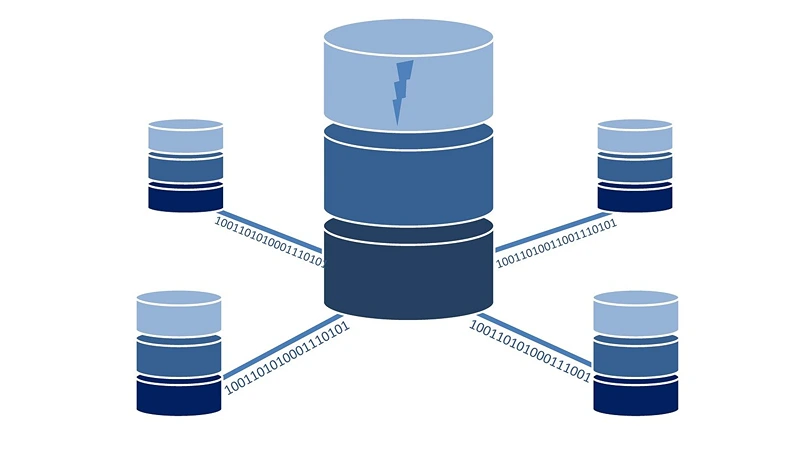The world is creating and storing more data than ever before. By 2025, experts believe we will be using up to 175 “zettabytes” of data. But what is a zettabyte, and why is this such a big deal? Let’s explore what this means and how it affects our daily lives.
What is a Zettabyte?
A zettabyte is a huge amount of data. To give you an idea, one zettabyte is equal to one billion terabytes. Imagine having a stack of DVDs that could reach the moon 23 times or circle the Earth 222 times—that’s what 175 zettabytes would look like. In simpler terms, it’s more data than we can easily comprehend.
A zettabyte (ZB) is a unit of digital information storage that is equivalent to one sextillion bytes, or 1021 bytes. To put it in perspective:
- 1 zettabyte = 1,000 exabytes
- 1 zettabyte = 1,000,000 petabytes
- 1 zettabyte = 1,000,000,000 terabytes
- 1 zettabyte = 1,000,000,000,000 gigabytes
Why is Data Growing So Fast?
Data is growing rapidly because of the many digital devices we use every day. Our phones, computers, and even smart devices like watches and home assistants all create and store data. Data is created every time we send a message, take a photo, or use the internet. With more people using these devices, the amount of data keeps growing.
| Unit | Symbol | Equivalent in Bytes | Equivalent in Zettabytes |
|---|---|---|---|
| Byte | B | 1 byte | ZB |
| Kilobyte | KB | bytes (1,024 bytes) | ZB |
| Megabyte | MB | bytes (1,024 KB) | ZB |
| Gigabyte | GB | bytes (1,024 MB) | ZB |
| Terabyte | TB | bytes (1,024 GB) | ZB |
| Petabyte | PB | bytes (1,024 TB) | ZB |
| Exabyte | EB | bytes (1,024 PB) | ZB |
| Zettabyte | ZB | bytes (1,024 EB) | 1 ZB |
| Yottabyte | YB | bytes (1,024 ZB) | 1,024 ZB |
Which Industries Are Using the Most Data?
Some industries use a lot more data than others. Here are a few that are leading the way:
Healthcare: Healthcare is now the fastest-growing sector in terms of data usage. By 2025, it will create more than a third of all the data in the world. This data helps doctors and researchers find new ways to treat patients and improve health services.
Manufacturing: Factories and production lines use data to improve the way they make products. This helps them save money and create better items faster.
Financial Services: Banks and financial companies collect data to keep track of transactions, prevent fraud, and offer better services to their customers.
Media and Entertainment: With streaming services like Netflix and YouTube, a lot of data is created and used to deliver content to millions of people around the world.
Opportunities and Challenges
As the amount of data grows, there are many opportunities for businesses. They can use this data to learn more about their customers, improve their services, and even create new products. For example, companies can personalize their products and services to better meet the needs of each customer. In healthcare, this might mean personalized treatment plans based on a person’s health data.
However, there are also challenges. Managing such a large amount of data is difficult. Many companies struggle because they need the right technology or enough experts to handle all this data. This can lead to problems like unnecessary work, employee burnout, and slow career progress for workers.
How Technology Can Help
Companies are turning to new technologies to manage and use all this data. Two of the most important ones are cloud technologies and artificial intelligence (AI).
Cloud Technologies: The cloud allows companies to store large amounts of data online instead of on physical servers. This makes it easier to access and analyze the data from anywhere in the world. Data lakes, a type of cloud storage, are especially useful because they can store all types of data securely.
Artificial Intelligence (AI): AI can help companies analyze data quickly and efficiently. It can identify patterns and trends that humans might miss. AI is also becoming more common in everyday tools, like chatbots and virtual assistants, which use data to provide better service.
Looking to 2025 and Beyond
By 2025, the world will likely reach 175 zettabytes of data. This is a huge number, and it shows just how important data is becoming in our lives. Businesses that can manage and use this data effectively will have a big advantage over those that can’t.
The need for data professionals who can interpret and manage all this information is also growing. Jobs in data science are expected to increase by 36% between 2021 and 2031. This means there will be more opportunities for people who want to work with data.
FAQ’s
Which industry is expected to create the most data by 2025?
The healthcare industry is expected to create more than a third of all data by 2025, making it the fastest-growing sector in terms of data usage.
How will AI help manage the growing amount of data?
AI can analyze large amounts of data quickly and find patterns that humans might miss. It also powers tools like chatbots and virtual assistants, making it easier for companies to use data to improve customer service.
Bottom Up
Finally, as we continue to create and use more data, the demand for data storage facilities will also grow. Data centers, which store and manage data, are being built all over the world. These centers need to be energy-efficient and environmentally friendly, as they use a lot of power to keep everything running smoothly.
By 2025, the world of data will be bigger and more important than ever. Understanding and preparing for this growth will be key to success in the future.

